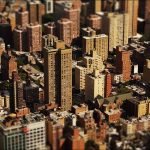Kitchens or a Pollution Hazard?
Post by : favouritehomes
There are many who believe that pollution only exists outdoors. But numerous researches have proved that a lot of pollution exists indoors too, especially in the kitchen. Some form of air pollutions in the kitchen like burnt toast can easily be seen and smelt, and we know how to deal with them consciously by activating the chimneys or exhaust fans or opening kitchen windows to let out the smoke.
But then there are these other forms of pollutions that can’t really be discerned by smell or by sight and these are the dangerous ones. Researchers in the UK have found that those who use gas cookers have higher levels of carbon monoxide and nitrogen dioxide in their kitchens which can sometimes be three times more than what is found outdoors and along busy roads. For those of you who are not in the know, nitrogen dioxide is a poisonous gas that contributes to the brown haze hanging over many cities. This should get you thinking about the importance of proper ventilation in your kitchen, especially while cooking!
Additionally, it was also found that kitchens have a higher concentration of particles that are 2.5 microns or less in size and small enough to penetrate the lungs. That’s worrisome news indeed. Aside from these pollutants, there could be formaldehyde gassing from furniture and kitchen cabinets or benzene emissions from wall paints and plastics. Placing pots directly off from the fire and onto granite surfaces can result in the release of radon gases in some cases too. This goes to show that there is no dearth of pollutants in your kitchen and stresses the need for proper evacuation of these gases from your enclosed environment.
Air fresheners and strong cleaning agents also leave their share of noxious fumes in energy-efficient homes which are usually kept tightly shut to reduce heating or cooling bills. Since we spend 90% of our time indoors and try to keep our homes air-conditioned and free of flying insects by keeping all doors and windows tightly shut, we are only breathing in more pollution than we ordinarily should if we were outdoors. To put it simplistically, the process of cooking is a form of controlled combustion of fats, oils, and carbohydrates; when you grill, fry or toast food with electrical or gas appliances, you are releasing carbon monoxide, carbon dioxide, nitrogen dioxide, and particulate matter aside from other volatile organic compounds into the air around you.
And if there is no vent available for it to get outside, you and your family will end up breathing in toxic substances, including acrolein, released from burning fats and oils – and earlier used in grenades in World War I for the irritation it induces in the eyes and lungs!
This information should teach you the importance of pollution hazards in your kitchen and the importance of proper ventilation.
 +91-98959 94000
+91-98959 94000 +971501148100
+971501148100












